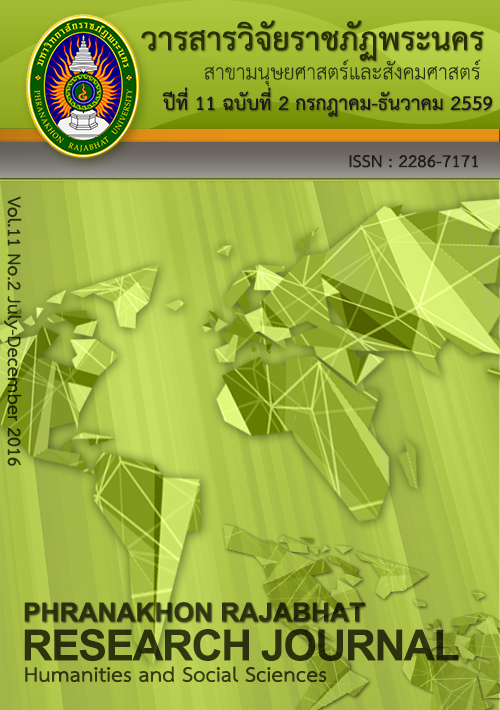การยอมรับพฤติกรรมการมีเพศสัมพันธ์ก่อนแต่งงานของคนไทย
Main Article Content
Abstract
การศึกษานี้มีวัตถุประสงค์เพื่อศึกษาการยอมรับพฤติกรรมการมีเพศสัมพันธ์ก่อนแต่งงานของชายและหญิงโดยแสดงให้เห็นความแตกต่างของการยอมรับพฤติกรรมดังกล่าวของประชากร 3 วัย คือ วัยรุ่น วัยทำงานและวัยสูงอายุ รวมทั้งศึกษาปัจจัยที่มีอิทธิพลต่อการยอมรับพฤติกรรมการมีเพศสัมพันธ์ก่อนแต่งงาน ผลการวิเคราะห์ข้อมูลทุติยภูมิที่ทำการสำรวจโดยสำนักงานสถิติแห่งชาติในปี 2551, ปี 2554 และปี 2557 พบว่าโดยรวมแล้วประชากรไทยยอมรับพฤติกรรม “ชายมีเพศสัมพันธ์ก่อนแต่งงาน”มากกว่า “หญิงมีเพศสัมพันธ์ก่อนแต่งงาน” และเมื่อศึกษาพหุปัจจัยที่มีอิทธิพลต่อการยอมรับโดยใช้สถิติการวิเคราะห์ถดถอยแบบโลจิสติกพบว่าปัจจัยเพศ อายุ สถานภาพสมรส การศึกษา ภาค เขตที่อยู่อาศัย ระดับความเคร่งศาสนา ปีที่ทำการสำรวจ ต่างมีอิทธิพลต่อการยอมรับพฤติกรรมการมีเพศสัมพันธ์ก่อนแต่งงานของทั้งเพศชายและหญิงอย่างมีนัยสำคัญทางสถิติ โดยเพศชายยอมรับได้มากกว่าเพศหญิง วัยรุ่นและวัยทำงานยอมรับได้มากกว่าวัยสูงอายุ และในปี 2557 ทุกกลุ่มอายุมีการยอมรับพฤติกรรมทางเพศทั้ง 2 ด้าน ได้มากกว่าปี 2551 และ ปี 2554 ข้อมูลเชิงคุณภาพจากการสัมภาษณ์เชิงลึกผู้ให้ข้อมูล 18 คน สนับสนุนข้อค้นพบและให้คำอธิบายเพิ่มเติมผลจากการศึกษาเชิงปริมาณ
This study aims to explain acceptance of premarital sex among Thai population among
different age groups; adolescence, working age and old age. Data for the study were drawn from the Social and Cultural Situation Survey, a national representative sample survey conducted by the National Statistical Office in 2008, 2011 and 2014. The results showed that Thai population are more likely to accept ‘Men having premarital sex’ more than ‘Women having premarital sex’. According to the Logistic Regression Analysis, it was found that gender, age, marrital status, education, region, place of residence, religious fervor and the year of survey are statisticallysignificant factors influencing on the sexual behavior acceptance in both men and women having premarital sex. Men are more likely than women to accept the sexual behavior before marriage. Population in adolescence and working-age accept more than old age. In the year 2014 all age groups accept sexual behaviors in all two perspectives more than population in 2008 and 2011. Data from in-depth interview from 18 cases support the findings and also explain quantitative results.
Article Details
Each publish articles were copyright by Phranakorn Rajabhat University
Any contents which appeared in each articles in the journal were authors personal opinion. It did not relate to Phranakorn Rajabhat University and other instructors in the university. Each authors would take responsibility on their articles. If there are any mistake, the authors will take responsibility themselves


